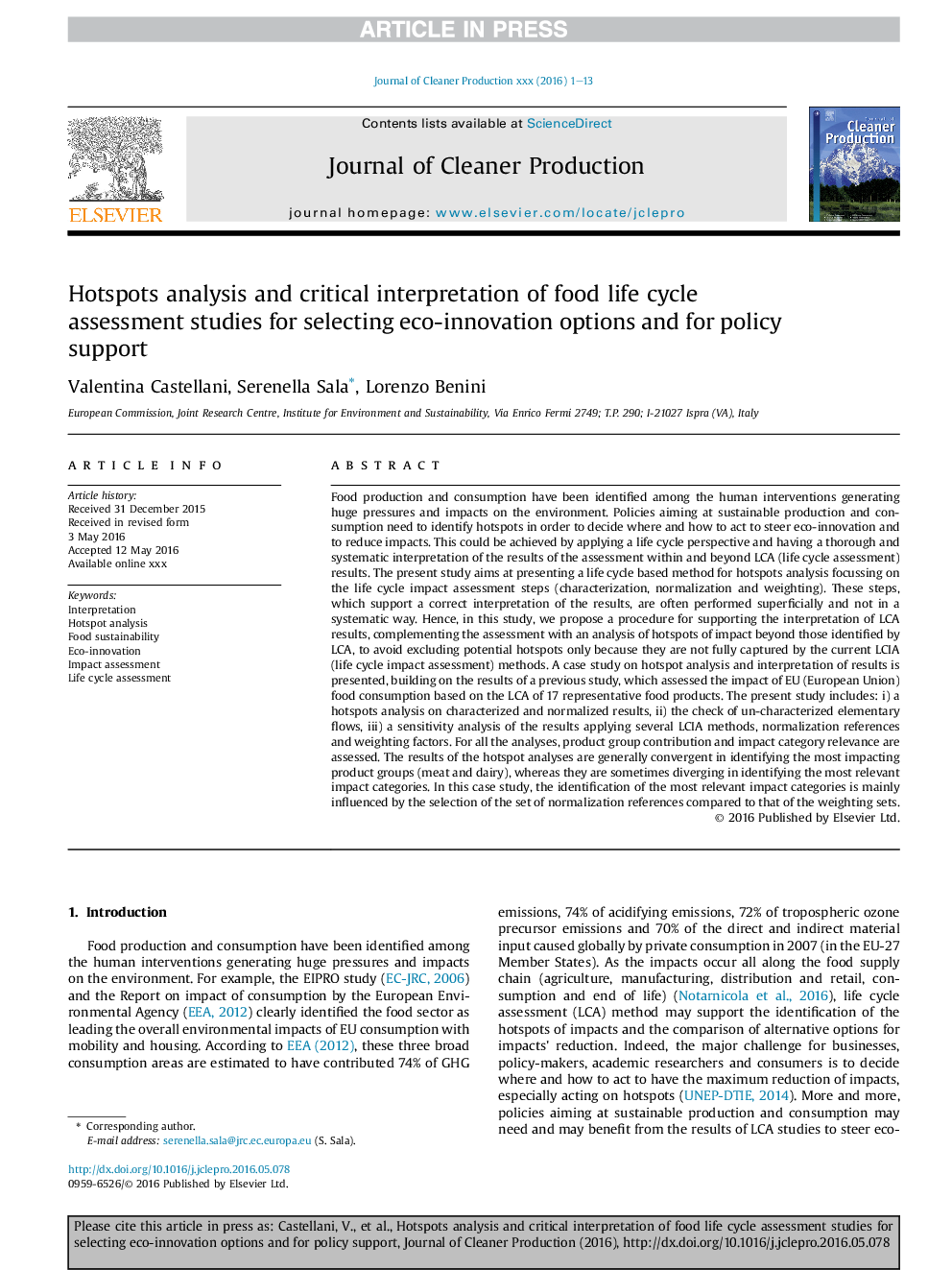| کد مقاله | کد نشریه | سال انتشار | مقاله انگلیسی | نسخه تمام متن |
|---|---|---|---|---|
| 5481532 | 1399335 | 2017 | 13 صفحه PDF | دانلود رایگان |
عنوان انگلیسی مقاله ISI
Hotspots analysis and critical interpretation of food life cycle assessment studies for selecting eco-innovation options and for policy support
ترجمه فارسی عنوان
تجزیه و تحلیل نقاط و تفسیر انتقادی از مطالعات ارزیابی چرخه زندگی برای انتخاب گزینه های نوآوری اقتصادی و حمایت از سیاست
دانلود مقاله + سفارش ترجمه
دانلود مقاله ISI انگلیسی
رایگان برای ایرانیان
کلمات کلیدی
تفسیر، تجزیه و تحلیل نقطه، پایداری مواد غذایی، محیط زیست نوآوری، ارزیابی اثرات، ارزیابی چرخه حیات،
موضوعات مرتبط
مهندسی و علوم پایه
مهندسی انرژی
انرژی های تجدید پذیر، توسعه پایدار و محیط زیست
چکیده انگلیسی
Food production and consumption have been identified among the human interventions generating huge pressures and impacts on the environment. Policies aiming at sustainable production and consumption need to identify hotspots in order to decide where and how to act to steer eco-innovation and to reduce impacts. This could be achieved by applying a life cycle perspective and having a thorough and systematic interpretation of the results of the assessment within and beyond LCA (life cycle assessment) results. The present study aims at presenting a life cycle based method for hotspots analysis focussing on the life cycle impact assessment steps (characterization, normalization and weighting). These steps, which support a correct interpretation of the results, are often performed superficially and not in a systematic way. Hence, in this study, we propose a procedure for supporting the interpretation of LCA results, complementing the assessment with an analysis of hotspots of impact beyond those identified by LCA, to avoid excluding potential hotspots only because they are not fully captured by the current LCIA (life cycle impact assessment) methods. A case study on hotspot analysis and interpretation of results is presented, building on the results of a previous study, which assessed the impact of EU (European Union) food consumption based on the LCA of 17 representative food products. The present study includes: i) a hotspots analysis on characterized and normalized results, ii) the check of un-characterized elementary flows, iii) a sensitivity analysis of the results applying several LCIA methods, normalization references and weighting factors. For all the analyses, product group contribution and impact category relevance are assessed. The results of the hotspot analyses are generally convergent in identifying the most impacting product groups (meat and dairy), whereas they are sometimes diverging in identifying the most relevant impact categories. In this case study, the identification of the most relevant impact categories is mainly influenced by the selection of the set of normalization references compared to that of the weighting sets.
ناشر
Database: Elsevier - ScienceDirect (ساینس دایرکت)
Journal: Journal of Cleaner Production - Volume 140, Part 2, 1 January 2017, Pages 556-568
Journal: Journal of Cleaner Production - Volume 140, Part 2, 1 January 2017, Pages 556-568
نویسندگان
Valentina Castellani, Serenella Sala, Lorenzo Benini,
